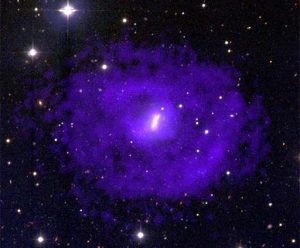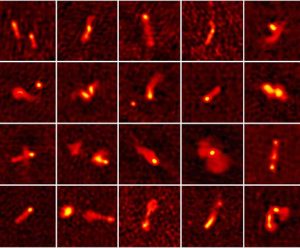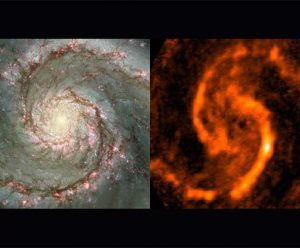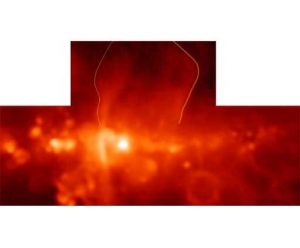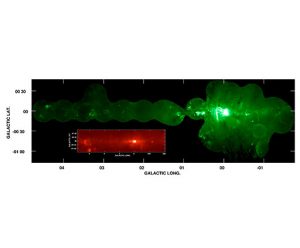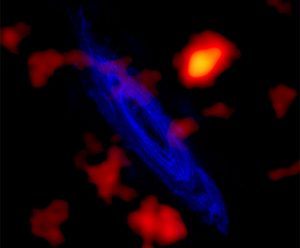An astronomer studying small irregular galaxies discovered a remarkable feature in one galaxy that may provide key clues to understanding how galaxies form and the relationship between the gas and the stars within galaxies.
Sky Survey Provides New Radio View of Universe
Astronomers using the National Science Foundation’s Very Large Array have overcome longstanding technical hurdles to map the sky at little-explored radio frequencies that may provide a tantalizing look deep into the early Universe.
Gas Clouds in Arms of Whirlpool Galaxy
Astronomers studying gas clouds in the famous Whirlpool Galaxy have found important clues supporting a theory that seeks to explain how the spectacular spiral arms of galaxies can persist for billions of years. The astronomers applied techniques used to study similar gas clouds in our own Milky Way to those in the spiral arms of a neighbor galaxy for the first time, and their results bolster a theory first proposed in 1964.
Giant ‘Lobe’ in Galactic Center
An astronomer using the National Science Foundation’s Robert C. Byrd Green Bank Telescope (GBT) has discovered that two prominent features rising out of the center of the Milky Way Galaxy are actually the distant edges of the same superstructure. This object, which has the appearance of a “lobe,” may have been formed during an epoch of furious star formation.
Origin of Enigmatic Galactic-center Filaments Revealed
Twenty years ago, astronomers discovered a number of enigmatic radio-emitting filaments concentrated near the center of the Milky Way Galaxy.
Galactic Building Blocks Seen Swarming Around Andromeda
Green Bank, WV – A team of astronomers using the National Science Foundation’s Green Bank Telescope has made the first conclusive detection of what appear to be the leftover building blocks of galaxy formation — neutral hydrogen clouds — swarming around the Andromeda Galaxy, the nearest large spiral galaxy to the Milky Way.






